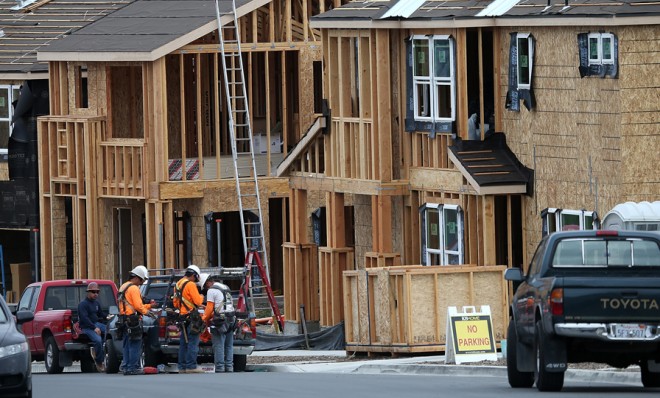What today's weak housing data says about the economy
Developers seem more cautious than analysts had expected...

In yet another worrying sign for the economy, new home construction increased just 0.9 percent last month, the Commerce Department announced this morning. The feds put the new seasonally adjusted annual rate at 891,000 new housing units this year, much lower than expectations that August construction would pick up the pace to an annual rate of 917,000 new housing units.
August's numbers — which are still an 11 percent increase over August 2012 — showed a wide gap between construction on multi-family residences and single-family homes. The rate for multi-family homes dropped 11.1 percent from July, while the rate for single-family homes rose 7 percent.
This "housing starts" data is a closely watched economic indicator that refers to the number of new homes or housing units on which construction begins in a given period. Because the numbers in any one month are closely tied to weather, the feds smooth the data with statistical formulas to reach a seasonally adjusted figure — hence the annual rate number.
The Week
Escape your echo chamber. Get the facts behind the news, plus analysis from multiple perspectives.

Sign up for The Week's Free Newsletters
From our morning news briefing to a weekly Good News Newsletter, get the best of The Week delivered directly to your inbox.
From our morning news briefing to a weekly Good News Newsletter, get the best of The Week delivered directly to your inbox.
The housing market, of course, is a huge driver of the U.S. economy. When lots of homes are being built, more construction jobs are filled, and sectors like raw materials, mortgage financing, manufacturing, and even the auto industry (builders buy trucks to transport materials) reap the rewards.
The housing recovery seemed right on track for the last four months. But now, August's data represents a "pause in momentum," as an economist from the National Association of Home Builders called it in USA Today.
The reason for that pause? It's largely about rising mortgage interest rates, which have spiked by more than a full percentage point in a few short months. For that you can probably thank Ben Bernanke, who has been teasing for months that he'll begin a round of "tapering" — essentially, cutting back on the Fed's $85 billion a month stimulus plan, which has helped to encourage borrowing. With the Fed's stimulus on the verge of winding down, interest rates are starting to rise, and now the construction industry is grappling with the consequences.
In just a couple hours, Ben Bernanke and his friends at the Fed are expected to finally announce the first round of tapering. Stay tuned for the inevitable parsing of Bernanke's words, which will affect interest rates, housing starts, and the rest of the economy.
A free daily email with the biggest news stories of the day – and the best features from TheWeek.com
Carmel Lobello is the business editor at TheWeek.com. Previously, she was an editor at DeathandTaxesMag.com.
-
 AI agents: When bots browse the web
AI agents: When bots browse the webfeature Letting robots do the shopping
-
 Will Chuck Schumer keep his job?
Will Chuck Schumer keep his job?Today's Big Question Democrats are discontented and pointing a finger at the Senate leader
-
 Dick Cheney: the vice president who led the War on Terror
Dick Cheney: the vice president who led the War on Terrorfeature Cheney died this month at the age of 84